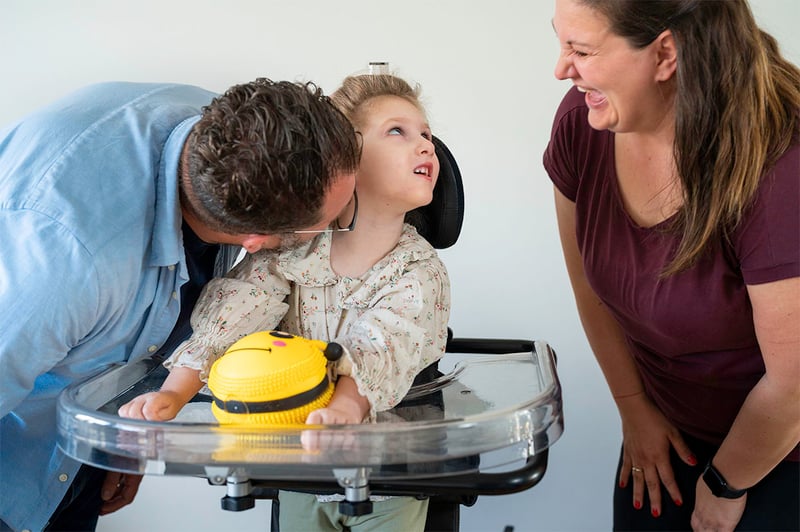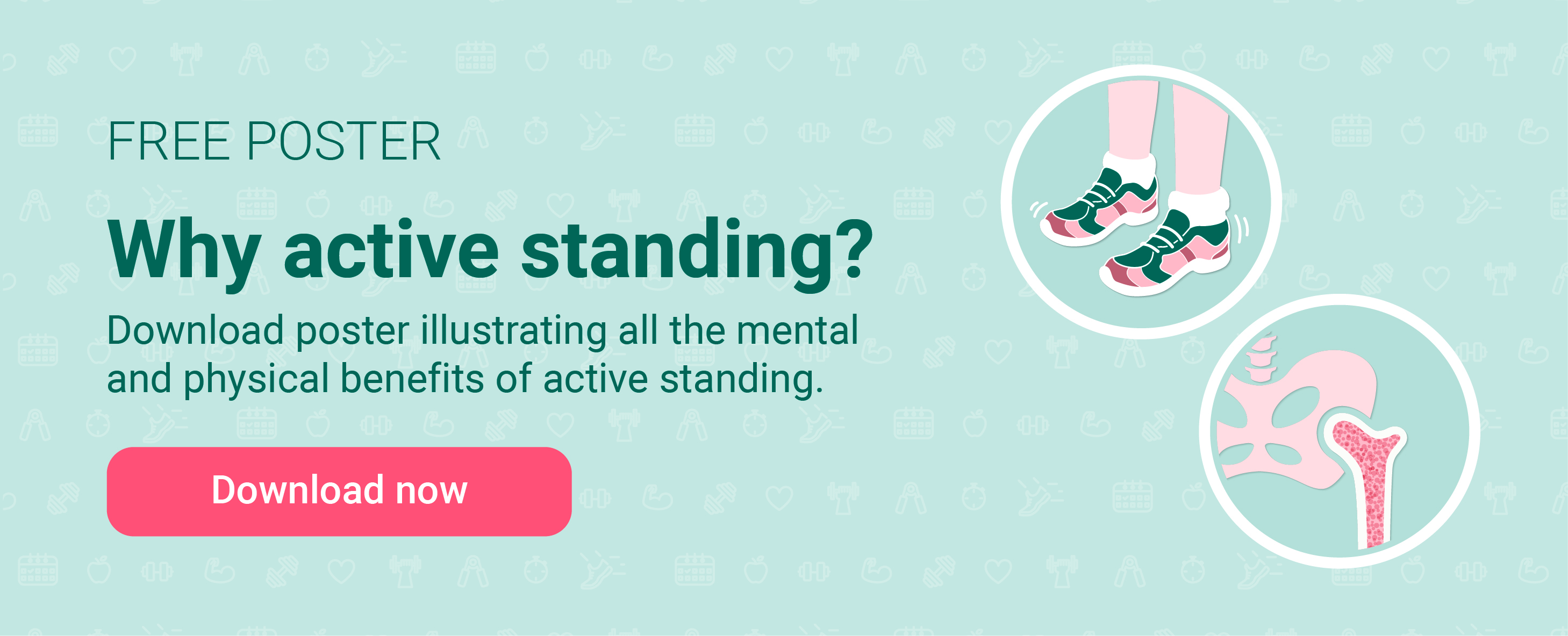Study – Physical activity for non-ambulant children with CP gives hope


This is the first qualitative study involving dynamic standing exercise in the Innowalk. Parents share their experiences of using the equipment to allow their child to exercise on a regular basis at home and the influence it has on both them and their child.
Introduction
The world health organisation recommends that adults with and without disabilities should be physically active for at least 150 minutes per week, while children should aim for 60 minutes daily. They also strongly emphasise the need for limiting sedentary time in conjunction with the activity.
It is well known that children with cerebral palsy (CP) spend most of their time in sedentary positions and it is challenging to achieve the physical activity recommendations, especially for those with severe gross motor limitations. These children are typically referred to as non-ambulant and their gross motor function is classified as level IV and V according to the Gross Motor Function Classification System (GMFCS).
In a previous study, researchers found that children with CP expressed their wishes to participate in self-selected physical activities with the appropriate support. Parents also shared hopes for their children making friends and having competent people to facilitate participation in physical activity.
Static standing is standard care in Sweden, but this involves equipment that does not enable movement of the body. An alternative type of standing is dynamic standing in the Innowalk, allowing whole-body exercise through assisted and repetitive walking movements of the legs and optional movements of the upper limbs.
What is the Innowalk?
Innowalk is like a cross-trainer for people who cannot stand and walk on their own. It enables assisted movement of the lower and upper limbs in a sitting and standing position. The assisted movement of the lower limbs is close to a normal gait pattern with flexion and extension of hips, knees and ankle joints.
The Innowalk is often referred to as “Dynamic standing” and research has shown that movement in the Innowalk is physical activity.
Previous studies have focused on providing information about development, testing and implementations of new innovations, methods and treatments, while this latest study wanted to capture the meaning of physical activity for the families involved.
You can find the full article “It is something that gives us hope”: Lived experience among parents to children with cerebral palsy who are non-ambulant of the phenomenon physical activity, with or without the use of a novel dynamic standing device by Katarina Lauruschkus et al. published in the peer review journal Frontiers in Rehabilitation Sciences here.
Aim of the study
The study aimed to gain knowledge of the families’ experience of physical activity
- For the parents themselves
- For their children with CP, who are non-ambulatory
Methods and participants
The study was based on a hermeneutic phenomenological approach, which is a qualitative research method that involves interpreting the subjective experiences of individuals and understand the meaning that they attach to those experiences.
Interviews were planned to be performed in the families' homes, but due to the Covid-19 pandemic all interviews were conducted online with Zoom.
Hermeneutic phenomenological approach
The aim with this method is to understand the lived experience of participants through a process of interpretation and analysis. This involves gathering rich and detailed descriptions of participants' experiences and using methods such as thematic analysis or narrative analysis to identify patterns and themes in the data. The goal is to develop a deeper understanding of the meaning of the experiences and the ways in which they are constructed by individuals within their social and cultural contexts.
Participants
Eleven parents of 9 children who were included in a research study on the long-term exercise effects of dynamic standing in the Innowalk, participated in the interview study. The children were aged 10-17 years, and all had CP, GMFCS IV (n=6) and V (n=3).
Interviews
The interviews were constructed as a semi-structured guide containing conversations around:
- Physical activity in general
- What physical activity meant to themselves and to their child
- What physical activity meant for their own and for their child’s wellbeing
- Physical activity for a child with and/or without a disability
- Which factors contributed to their child being physically active or inactive
- Experiences with dynamic standing exercise in the Innowalk
Results
Physical activity was seen as important for the whole family and the positive benefits experienced physically, physiologically and mentally, when being physical active, were similar for both parents and their children. The parents expressed awareness around the fact that physical activity was even more important for their child. Nevertheless, parents found it challenging finding time and energy for everything needed around the child.
The parents talked about the extended need of support to enable participation in physical activity. They are depending on people, the environment and equipment.
The practical use of Innowalk for dynamic standing exercise was perceived as easy and was seen as the only possibility for the child to exercise on a regular basis at home. It was time and energy saving for the child and the parents, and it gave parents an experience of the child being independent. Parents described their child being actively involved in exercise in the Innowalk and they felt it was a meaningful activity. The parents also experienced that the exercise in the Innowalk gave their child many positive health benefits.
The ability to allow their children to take part in physical activity on a regular basis gave the parents hope. Their children live with a severe condition and their health could worsen quickly. Therefore, small positive health changes in everyday life meant a lot to the families invovled.
Conclusion
The study found that physical activity is seen as important for both parents and their children living with a severe CP diagnosis, and physical activity is closely related to hope for the child’s future health and wellbeing.
Physical activity is possible for children with CP who are non-ambulant. However, to support physical activity, it is important to limit dependence and mitigate negative consequences. Empowerment and autonomy can be enhanced through relationships, support, and assistive devices such as the Innowalk, resulting in positive experiences and renewed hope for families.

Rikke Damkjær Moen brings many years of experience as clinical physiotherapist to the Made for Movement team. Her mission is to ensure that everybody, regardless of mobility problems, should be able to experience the joy and health benefits of physical activity. As our Medical Manager, Rikke is passionate about sharing knowledge so that individuals with special needs, families, and clinicians can discover the possibilities and solutions provided by Made for Movement.
The F-words: Fitness, Function, Friends, Family, Fun and Future help practitioners, educators, and families to create a supportive and...
It's a very special story marked by love, effort, and unstoppable determination. It's about Tom and his family. In the interview,...
A severe accident during a hockey game resulted in 35-year-old Tobias breaking his neck and becoming paralysed from the armpits down....
Hear from us from time to time and learn new things
